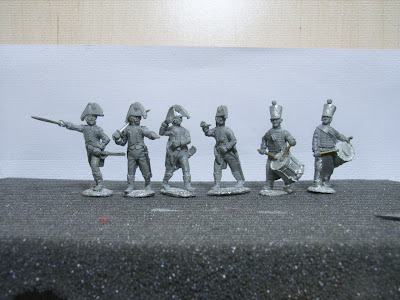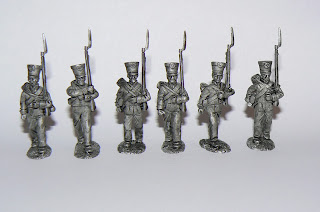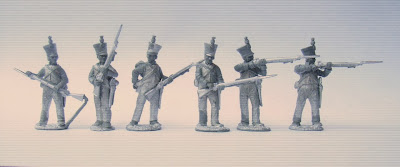I am delighted to be able to include a guest post on the blog. This is from a good friend in Caracas, Carlos Godoy, who is a great expert on the Independence wars in Venezuela. I hope that this will be the first of several posts on this fascinating period from Carlos:
VENEZUELAN
WAR OF INDEPENDENCE
1811-1814
The
Republic of Venezuela, as an independent nation, was declared on July 5, 1811 by
seven (7) of the provinces that made up the Captaincy General of Venezuela,
namely:
EAST
WEST
Mérida
Margarita
Trujillo Barcelona
Barinas
Cumana
Caracas
The
following provinces did not join the Republic,
and remained subjects of the Spanish crown:
NORTHEAST SOUTH
Zulia Guayana
Coro
The
1st Republic was short-lived. Its fate was sealed with the capture of the fortress
of Puerto Cabello by the Royalist forces and the subsequent surrender of
Francisco de Miranda in San Mateo to the leader of the Royalist forces Domingo
Monteverde. The causes for the failure of the 1st Republic were examined and
analysed in detail at the time by Colonel Simón Bolívar, in a document that has
gone down in history as the Cartagena Manifesto.
Following
the loss of the Republic, the main political and military leaders opted for
exile. Bolívar and others from Caracas and the eastern provinces travelled to
Cartagena, New Granada Province (now the Republic of Colombia ), which had
declared its independence from the Government of Bogotá.
A
group of Republicans from the Eastern Provinces (Barcelona, Cumaná) among them
Colonel Santiago Mariño, José Francisco Bermúdez, Manuel Carlos Piar and
Antonio José de Sucre (later known as the Gran Mariscal de Ayacucho) traveled
to the Island of Trinidad, a British colony at the time.
In
Cartagena, Bolívar was able to join the New Granada Army with the rank of
colonel and was assigned to command the military post of Barrancas, in charge
of a small fort on the Magdalena River and a 70-man garrison.
From
this remote corner of New Granada he launched the Magdalena Campaign, that
culminated successfully on December 31, 1812.
As
the year 1813 dawned, the entire territory of the Republic o f Venezuela was under
the control of civilian and military authorities loyal to the Spanish king, a
situation that would soon change.
Military
operations began on two separate and unrelated fronts. In the east, the
Chacachacare Expedition, led by those who had been living in exile in Trinidad,
landed on the first day of January north of the Province of Barcelona,
launching a campaign that enabled them to take military control of the major
cities in that province and in the province of Cumaná. The most noteworthy
events in this campaign were the battles for control of the city of Maturin.
Also
in the East, but further north on the island Province of Margarita, the
Republican forces attacked and overran the Pampatar Fortress, releasing Juan
Bautista Arismendi. From Margarita a seagoing expedition was organized that
allowed the Republicans to take the city of Barcelona in August 1812. The
eastern provinces remained under Republican control throughout the rest of that
year.
In
the west, Simon Bolivar at the head 500 men, successfully took the city of
Cúcuta on February 28, 1813, where he defeated Colonel Ramon Correa and his well-barricaded
800 men, plus 600 civilians, all of whom, following the defeat, decided to
evacuate the site and retreat to the city of San Cristóbal (in Venezuela).
This
western theatre of operations became the scenario for what was to be known as
the Admirable Campaign. Following his
victory in Cúcuta, Bolívar was appointed Brigadier by the government of the
United Provinces, placed in command of the 500-man 5th Battalion of the Union, and
authorised to move into Venezuela in pursuit of Colonel Correa. In command of
officers such as Rafael Urdaneta, Atanasio Girardot, Antonio Ricaute, Luciano
D'Elhuyar and Francisco de Paula Santander, 4 canons and 1,400 muskets, Bolívar
launched the Admirable Campaign on May 14, 1813. On August 6 that same year,
Bolívar marched triumphantly into Caracas, where he received the title of The
Liberator.
The
liberation of Merida Province was followed by that of Trujillo (Battle of Agua
de Obispo). In the city of the same name, on June 15, 1813, Bolivar issued his
famous Decree of War to the Death
Trujillo
was followed by Barinas. The Admirable Campaign was noted for rapid
mobilization by the Republican forces, who were able to anticipate the
movements of the enemy forces, attacking them where they least expected. Of this
campaign special mention must be made of the battles Niquitao, Los Taguanaes and Los Horcones. On August 2nd Bolivar entered the city of Valencia,
which had been abandoned by Royalist forces bound for the walled city of Puerto
Cabello, who left behind a huge cache of war supplies, including 30 pieces of
light artillery and ammunition. On orders from Bolívar, Atanasio Girardot set
out in pursuit, but was unable to reach the retreating forces before they took
refuge in the Puerto Cabello, a city to which Luciano Delhuyar then lay siege.
The
Royalist troops fleeing Caracas joined troops from the East that were moving
west following the victories of Bermúdez, Mariño and Piar, gathering in the
central plains. Monteverde, besieged in Puerto Cabello, received reinforcements
by sea and decided to try to break out of the city and attack the Republican
forces that had retreated to Bárbula, a hill overlooking the Naguanagua plain on
the outskirts of Valencia. There a major battle was fought, and won by the
Republicans who, however, paid a high price: the life of Colonel Atanasio Girardot.
On
October 3 the Republicans avenge Girardot´s death in the battle of Las Trincheras, forcing the Royalists
back to Puerto Cabello, where they are once again blockaded.
The
Republican forces are divided, launching operations in the northwest,
Barquisimeto and Coro, under the leadership of Rafael Urdaneta, while Vicente
Campo Elías is sent to the central plains (Calabozo) where he defeats José Tomás
Boves in the Battle of Mosquiteros.
On the same day of the battle, in Caracas Bolívar is appointed by the Congress
of Venezuela Captain General of the armies and proclaimed Liberator.
From
Coro, Brigadier José Ceballos moves on to Barquisimeto with a strong division. After raising new forces in Valencia, Bolívar
joins Urdaneta and, on November 10, they fight the battle of Tierritas Blancas, where Ceballos takes
the day when the Republican cavalry and infantry leave the battlefield. In the
aftermath of this action, as punishment, the battalion that left the field is
stripped of its badges and banners by Bolivar and is then called the Nameless Battalion. The end result is
that Barquisimeto was lost to the Republican cause.
Vigirima
was the stage for the longest battle in the war. After three days of fighting,
Major General Jose Felix Rivas and Commander Delhuyar defeat the Granada Regiment
that consisted of 800 European veterans and 200 Venezuelans led by Colonel Miguel
Solomon.
In
general, guerrillas and rebellions in favor of the cause of Spain emerged throughout
the territory of the Republic. While the battle was being fought at Vigirima, Royalist
troops in Apure and Coro/Barquisimeto concentrated around the town of Araure, where
a battle took place on December 5, 1813. Here the Nameless Battalion is bathed in
glory, breaking through the centre of the Royalist infantry, and the next day is
renamed by Bolivar: Vencedores de Araure.
With
the victory in Araure, military operations ended in 1813. The Republican forces
controlled the provinces of Merida, Trujillo, Caracas, Cumana, Barcelona and
Margarita, while supporters of the Spanish monarchy were in control of the
provinces of Maracaibo, Coro (in the northwest , Apure (southwest), Guárico
plains (Province of Caracas, central Plains) and Guyana (south), surrounding the
Republican forces .
1814
will be decisive for the fate of the 2nd Republic.


.JPG)
.JPG)
.JPG)
.JPG)
.JPG)
.JPG)
.JPG)
.JPG)
.JPG)
.JPG)







































